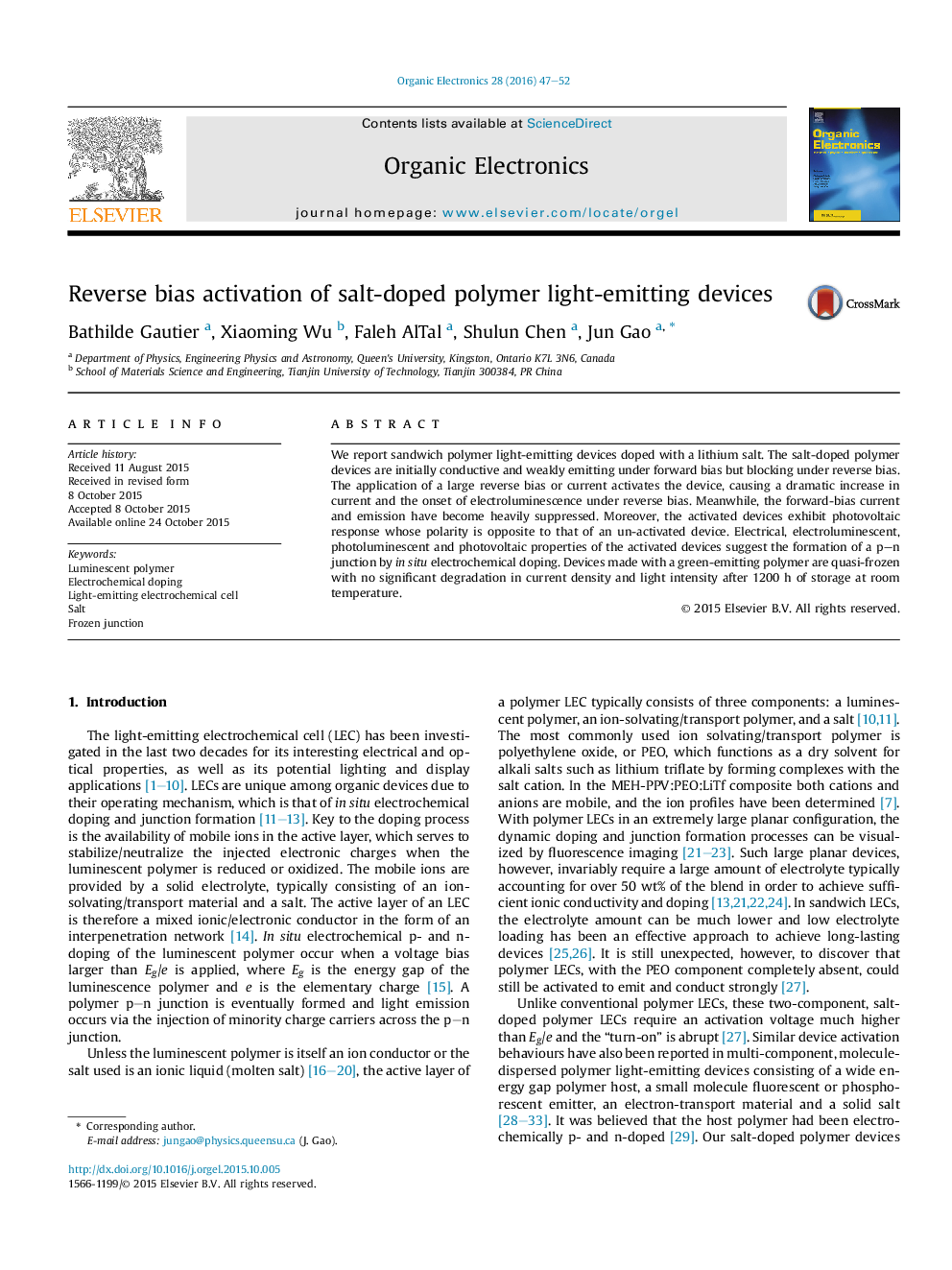| کد مقاله | کد نشریه | سال انتشار | مقاله انگلیسی | نسخه تمام متن |
|---|---|---|---|---|
| 1267112 | 1496829 | 2016 | 6 صفحه PDF | دانلود رایگان |
• Polymer light-emitting devices doped with a lithium salt are initially blocking under reverse bias.
• The application of a large reverse bias or current activates the device.
• The activated device is strongly conductive and emissive under reverse bias.
• The unipolar device characteristics suggest the formation of a p–n junction by in situ electrochemical doping.
• The activated state is quasi static at room temperature.
We report sandwich polymer light-emitting devices doped with a lithium salt. The salt-doped polymer devices are initially conductive and weakly emitting under forward bias but blocking under reverse bias. The application of a large reverse bias or current activates the device, causing a dramatic increase in current and the onset of electroluminescence under reverse bias. Meanwhile, the forward-bias current and emission have become heavily suppressed. Moreover, the activated devices exhibit photovoltaic response whose polarity is opposite to that of an un-activated device. Electrical, electroluminescent, photoluminescent and photovoltaic properties of the activated devices suggest the formation of a p–n junction by in situ electrochemical doping. Devices made with a green-emitting polymer are quasi-frozen with no significant degradation in current density and light intensity after 1200 h of storage at room temperature.
Figure optionsDownload as PowerPoint slide
Journal: Organic Electronics - Volume 28, January 2016, Pages 47–52
